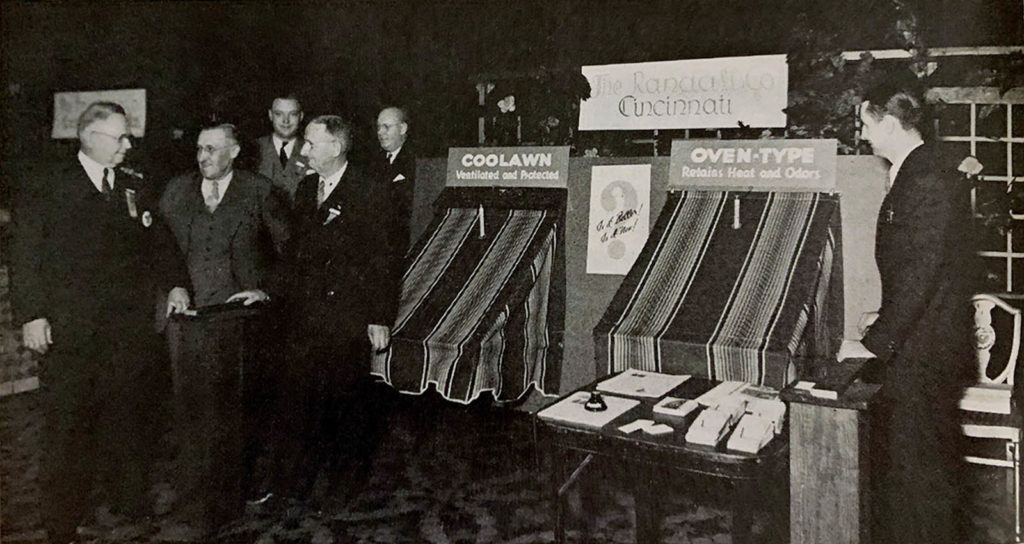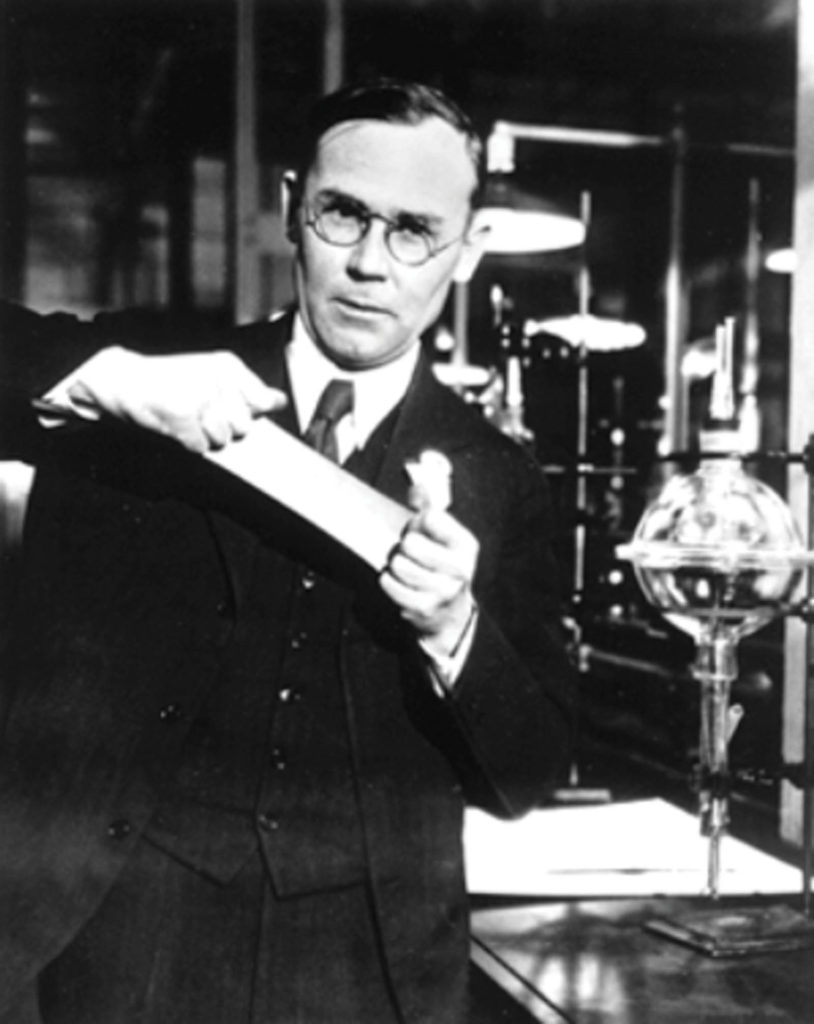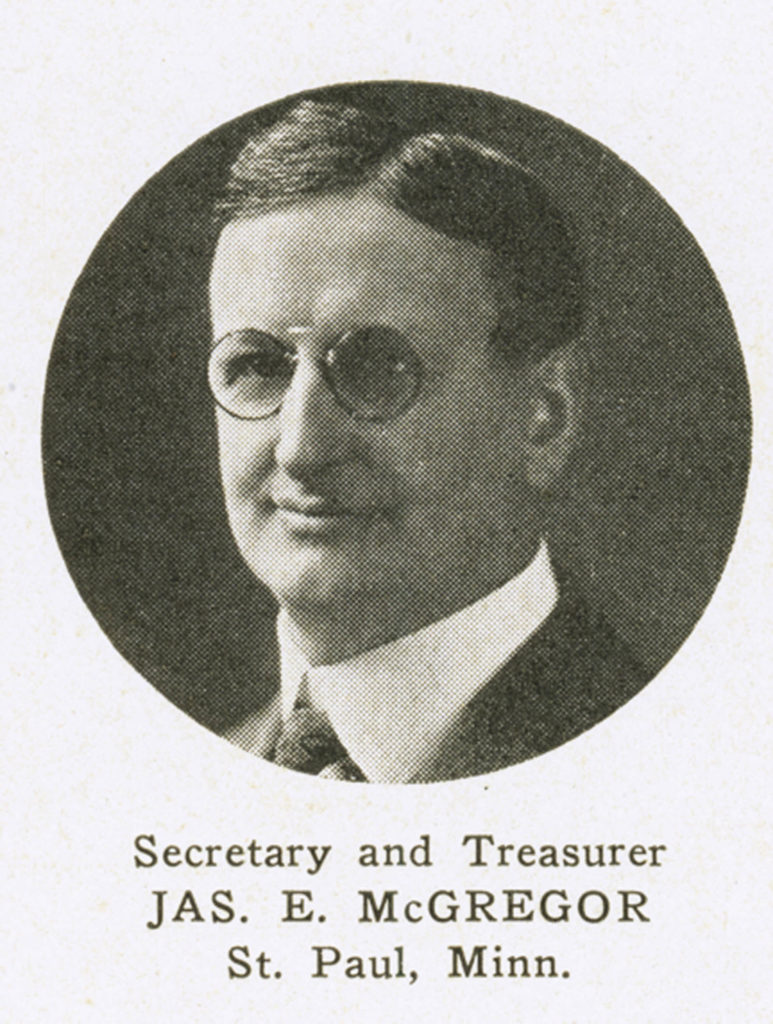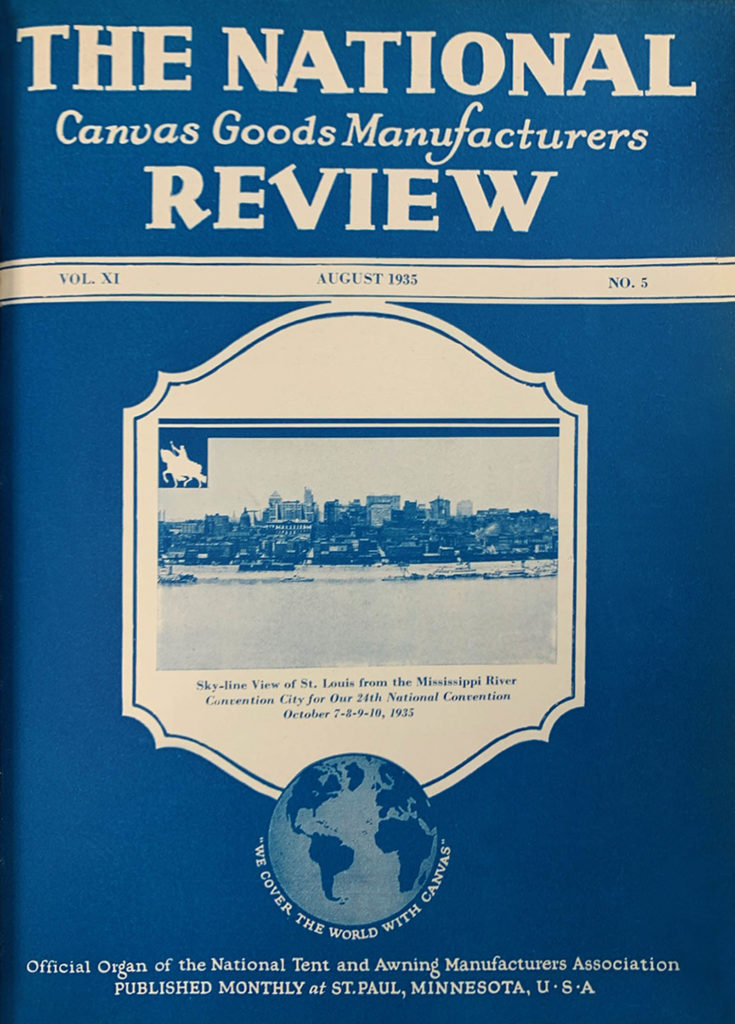
Judging from the crowds which it attracted, we are safe in saying that one of the newest and most practical awning accessory exhibited was the Coolawn Ventilator. This device is applicable to nearly every type of residential awning, as well as many types of store awnings. In construction and application it is extremely simple, being a metal hood which attaches to the building and in which, at the lower edge, the top of the awning fabric fastens.
It is in complete harmony with most architectural designs. The louvers in the hood permit ventilation under the awning and from the room, and when the awning is not in use, this hood serves as a fire and weather protector for the awning fabric as the awning folds in under the hood.
The Coolawn Exhibit was so designed that electrical heating elements threw an equal amount of heat under an old type awning and under the same type of awning equipped with a Coolawn Ventilator. Laboratory thermometers, suspended through the awnings, showed that the temperature beneath the ventilated awning was from 16 to 20 degrees lower than that of the old oven-type awning.
It is evident that awningmen everywhere are well aware that their most profitable field in the next few years is going to be practically the same as that of the air conditioning engineer … It seems logical to assume that the Coolawn Ventilator has already found its place in the air conditioning field because it not only gives a definitely lower temperature beneath the awning, but also offers a fire protection that underwriters will not overlook.
85 YEARS AGO …
Adolf Hitler orders German rearmament, violating the Versailles Treaty; Hermann Goering officially creates the German Air Force, the Luftwaffe; The League of Nations denounces Italy’s invasion of Abyssinia.
DuPont chemist Wallace Hume Carothers creates the first completely synthetic fabric—nylon, subsequently used as a replacement for silk in women’s stockings in 1940.
President Roosevelt opens the second phase of the New Deal in the U.S., calling for social security, better housing, equitable taxation and farm assistance. On Black Sunday, April 14, the worst sandstorm in history ravages the American Midwest, creating the “Dust Bowl.”
An article in the April issue of The National Canvas Goods Manufacturers Review compares energy savings between Venetian blinds and awnings, and notes that “The General Electric Company recommends awnings as an aid to their air-conditioning plants.”
After the U.S. Supreme Court terminates all Codes issued under the Recovery Act, Manager-Editor Jas. E. McGregor tells readers: “The regulation of industry is handed back to industry itself. We would like to urge our readers and manufacturers to continue to maintain fair standards of wages, hours and working conditions.”
On Jan. 24, Gottfried Krueger Brewing introduces the first canned beer. Alcoholics Anonymous is founded on June 10.
AUGUST 1935
Sky-line View of St. Louis from the Mississippi River
Convention City for Our 24th National Convention
October 7-8-9-10, 1935
“WE COVER THE WORLD WITH CANVAS”
 TEXTILES.ORG
TEXTILES.ORG





